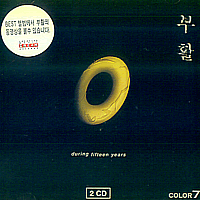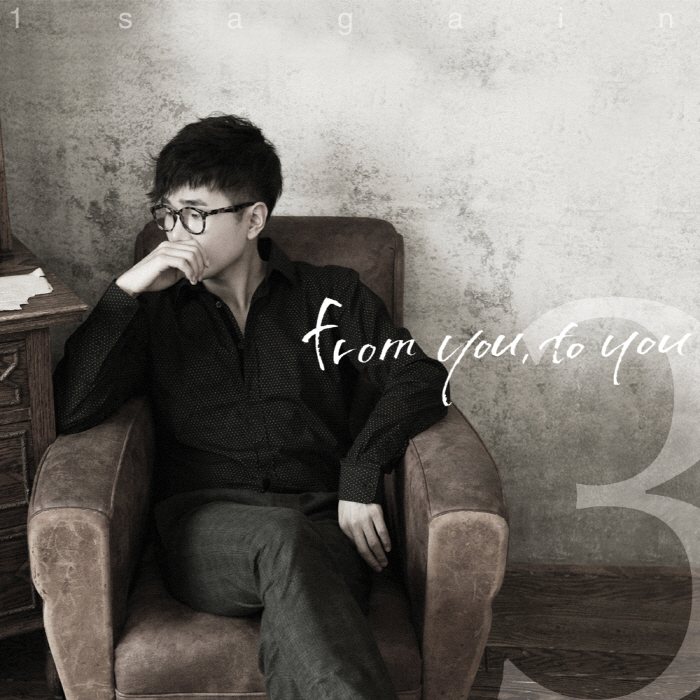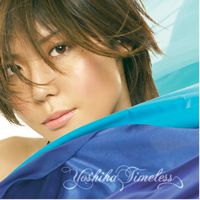
 |
 |
 |
 |
|---|
■ 天聲 / 당신에게
남편 노 기 정
나는 어렸을 때,
할머니가 만들어 주시던 음식이
이 세상에서 제일 맛있었소
한 번 만든 동태찌게는
여러 번 밥상에 올려지곤 했소
올라오는 횟수가 더해감에 따라
동태의 살은 뭉개지고
가루가 되어 버렸소
가루된 동태찌게,
이 세상에서 제일 맛있었소
나는 당신이 들려주는 해금소리가
이 세상에서 제일 아름답다오.
나는 그 흔한 기타하나 못친다오.
피아노 앞에 앉아
‘도레미파솔라시도’를 치고는
마치 내가 음악의 대가라도 된 양
으슥대는
음악의 쑥맥이라오
그런 내가 음악하는 당신과 결혼했소
당신은 여러 번 굿거리 장단을 가르쳐 주었지만
항상 눈만 말뚱거렸소
결혼 햇수가 더해감에 따라
당신의 해금소리가 내 귀에 들어오기 시작했소
그것은 마치 할머니가 만들어 주시던 동태찌게처럼
음악이 자꾸 부스러지고
가루가 되어갔소
그리고는
내 귀에 딱 맞는,
이 세상에서 제일 아름다운,
음악이 되었다오.
당신 해금소리 중에서도
밤 늦게 퇴근해 아파트 문 앞에 발을 멈추고 듣는 소리,
그 소리가 제일 아름답다오.
밤 깊어 인적없고 북두칠성 중천에 빛날 때
어둠 속 나 홀로 몰래 듣는 해금소리
베토벤이 눈먼 소녀의 피아노 소리에 취하듯
나는 당신 해금소리에 완전히 취해 버린다오.
옆집 방해될세라 조용히 연습하는 해금소리
들릴 듯 말 듯
가슴 촉촉히 적셔 진다오.
당신 해금소리 들으며
할머니 젖무덤 연상하오.
초등학교 들어가서도 오랫동안
동생과 함께
할머니 젖 만지며 잤소
그래서 할머니 냄새 잘 알지요
비릿했소
그러나 그 냄새는
내 탯줄의 냄새요,
뛰놀다 넘어져 깨져 흐르는 무릎팍 피에
흙가루 뿌리고 다시 뛰놀던
그 시절 냄새라오
당신의 해금소리는
내 얼의 소리요,
내 고향의 소리요,
내 행복의 소리라오.
■ 지영희 류 해금산조
이 산조는 진양, 중모리, 중중모리, 굿거리, 지진굿거리, 자진모리의 6악장으로 구성되어 있다. 해금의 명인이었던 지영희의 산조에는 해금이라는 악기가 가지고 있는 특징적 연주기법이 잘 살아 있다. 경기음악의 달인이었던 지영희의 산조에는 다른 산조가 계면조 중심의 남도가락으로 짜여져 있는것에 비해 경기음악적인 선율이 많아 경쾌하다. 중중모리에서 나타나는 엇중모리형 리듬 분할, 또 굿거리를 빠르게 몰아서 자연스레 자진모리로 넘어가는 것이 특징적이다.
■ 한범수 류 해금산조
이 산조는 진양, 중모리 중중모리, 자진모리의 4악장으로 구성되어 있다. 한범수는 그만의 대금산조를 만든 대금의 명인이며, 퉁애와 해금 연주에도 능했다. 대금산조를 만든 이후에 해금 산조를 만들었기 때문인지, 해금산조에 대금가락이 많이 섞여 있다. 대금산조가 그랬듯이 선율의 리듬 분할이 변박보다 정박이 많아서 담백한 맛을 가지고 있다.
■ 서용석 류 해금산조
이 산조는 진양, 중모리, 중중모리, 빠른 중중모리, 자진모리의 5악장으로 되어 있다. 서용석은 서용석 류 대금산조를 만든 대금의 명인이며, 아쟁 연주와 작곡에도 뛰어났다. 자신이 체득한 풍부한 남도선율을 바탕으로 해금 산조를 만들었기 때문에, 계면조가락이 많은 것이 특징이다. 진양의 계면조와 자진모리에서의 덜렁제 부분이 백미라고 할 수 있다.
■ 김영재 류 해금산조
이 산조는 진양, 중모리, 중중모리, 엇모리, 자진모리, 휘모리의 6악장으로 구성되어 있다. 김영재는 해금과 거문고의 명인이며 작곡가로서 자신이 체득한 풍부한 음악을 바탕으로 해금산조를 만들었다. 다른 산조보다 선율의 리듬분할과 본청 변화가 다양하고 해금 악기만의 특유의 연주기법이 잘 살아 있다. 또한 엇모리와 휘모리악장의 첨가는 획기적인 것으로, 산조음악을 확장, 발전시켰다. 그래서 음악성과 연주기법이 뛰어나야만 이 산조의 제 맛을 낼 수가 있다고 한다. 역시 엇모리의 다양한 엇박과, 휘모리의 슬픈 듯 경쾌한 맛이 남다르다.![]()
■ Haegeum
The haegeum (해금, 奚琴, two stringed spike fiddle) is known as Korean fiddle whose origin is obscure. It was suggested, however, to have introduced into the Koryeo period (792-1392) from China via Central Asia and the Middle East as the family of spike fiddle can be easily found in various parts of the world, especially in those regions. The haegeum is constructed by the employment of all the materials of paleum (팔음, 八音, Eight Material, e.g. metal, stone, silk, bamboo, gourd, clay, leather, and wood), which is the Chinese and Korean methods of classifying musical instruments, so that it is regarded as a unique instrument. It is classified as the string instrument, like komuugo and kayageum, but is an essential instrument for ensemble performances, particularly with the wind instrument.
The two strings are supported by a bridge called weonsan (원산, 遠山). It is played with a bow which is inserted between the two strings and this manner makes the haegeum playing distinctive from other bowed instruments which the right-hand action involves in a horizontal and lateral movement. Its playing method is that a player sits on the ground crossing his/her both legs and the base of the haegeum is put on the player's end of the left-foot. Its range consists of more than two octaves (b to f'').
■ Sanjo
The term'Sanjo?(산조, 散調, literally scattered melodies) refers to a solo instrumental music which is derived from a melody of Sinawi (시나위), a shaman music or a melody of Pansori (판소리, an epic song performed by one singer accompanied by a drum player). It is performed by setting a regular rhythmic framework of changdan (장단, 長短, literally "long and short " and refers to rhythmic cycle) which is formed by several different movements like "suite " and each movement continuously develops in terms of rhythm, tempo and ornamentation based on a given melody. Its performance depends on a player's skill and mood in the way of improvising and varying the existent melody. When a master player completes to playing Sanjo on his/her own style, it is called his/her ryu (류, 流) which can be interpreted as style or version. This genre has been applied to the representative instruments such as keomungo (거문고, six-stringed plucking zither), kayageum (가야금, 伽倻琴, twelve-stringed plucking zither), taegeum (대금, large transverse bamboo flute),piri (피리, bamboo oboe), ajaeng (아쟁, 牙箏, string zither with a bow) and so on, and called as komungo Sanjo and so on, which became established independently.
■ Chi Young-hee ryu Haegeum Sanjo
The version of Chi Young-hee comprises six different movements - Chinyangjo, Chungmori, Chungjungmori, Kutgeori (굿거리), Chajin-kutgeori (자진굿거리) and Chajinmori (자진모리). Chi, who was the master of the haegeum, expresses the characteristic features of the performance techniques which the haegeum possesses and contains its potential. As Chi also was the master of styles of Kyeonggi music, hisSanjo shows the lively melodies, whereas other versions of the Sanjo are characterized by the sad melodies of kyemyeonjo (계면조, 界面調, a kyemyeon mode) which is centred in the Sourthern part of Korea. In particular, several places where the characters of his style are demonstrated rhythmic division of the type of eotchungmori appeared in chungjungmori and driving kutgeori into faster. And this reaches the final fastest movement of chajinmori in a natural manner.
■ Hahn Peom-su ryu Haegeum Sanjo
The version consists of four movements - Chinyangjo, Chungmori, Chungjungmori and Chajinmori. Hahn Peom-su is the master of the taegeum who also made his own Taegeum Sanjo and is also the accomplished tungae (퉁애, large notched bamboo vertical flute) and haegeum player. His haegeum version shows lots of taegeum melodies, probably deriving from the fact that he made the Haegeum Sanjo after composing the Taegeum Sanjo. As in the Taegeum Sanjo, his style of the Haegeum Sanjo expresses authentic and refined tastes in terms of which his rhythmic division of the melody lies in cheong-pak (정박, 正拍, literally regular beats/ rhythms) rather than pyeon-pak (변박, 變拍, irregular beats/ rhythms).
■ Suh Yong-seok ryu Haegeum Sanjo
Suh's version consists of five movements - Chinyangjo, Chungmori, Chungjungmori, Ppareun-chungjungmori (빠른 중중모리) and Chajinmori (자진모리). Suh Yong-sok is the master of the taegeum who composed Suh Yong-sok ryu Taegeum Sanjo and is also a fine ajaeng player and composer. His version of Haegeum Sanjo is characterised by the kyemyeon melody which is based on his musical experiences with the Namdo (남도, 南道, South regions) melody. In particular, part of teolleongje (덜렁제) in kyemyeonjo and chajinmori of the first movement of chinyang can be the gem of the this music.
■ Kim Young-jae ryu Haegeum Sanjo
Kim Young-jae ryu of Haegeum Sanjo consists of six movements - Chinyangjo (진양조), Chungmori (중모리), Chungjungmori (중중모리), eotmori (엇모리), Chajinmori (자진모리) and Tanmori (단모리). Kim, who is not only the master player for the haegeum and komun'go but also a composer, arranged Haegeum Sanjo showing his enriched musical experiences and imagination. His version is diverse in terms of rhythmic division and poncheong (본청) of melody, and shows its unique technique of the haegeum. He also added another two movements, eotmori and huimori (휘모리), developing from the previous movements. This is regarded as a pioneering work. In these two last movements, the various eot-pak (엇박, a kind of syncopated rhythm) in eotmori and the contrastive moods between sad and lively melodies in huimori are the characteristic features. Thus there is no doubt that his version should be played by a master player who is highly musical and has an excellent technique.![]()
■ 박 정 실(朴貞實) (해금)
1950. 서울 출생
1969. 서울국악예술중·고등학교 졸업
1973. 서라벌예술대학 졸업
서울시립국악관현악단 단원과 전북대학교 한국음악과 강사 역임
현재 서울국악예고, 중앙대학교 한국음악과 출강
박정실은 서울에서 1남 5녀중 4녀로 태어났다.
그가 태어나기 직전까지 중국 용정에서 오랜 기간 생활하셨던 그의 부모님은 외국 생활중에 우리 음악에 대한 소중함을 인식하였다고 한다. 박정실은 부모님의 권유에 의해 우리 음악에 발을 딛게 되었다. 그의 언니들도 한국음악과 한국무용을 전공하였으며, 박정실 역시 그 뒤를 이어 무용, 가야금, 해금, 피아노, 바이올린 등 다양한 악기를 공부하게 되었다.
어느것 하나 치우칠 것은 없었으나 그 중 해금에 특출한 음악성이 나타나기 시작하자 박정실은 당시 해금의 대가인 지영희 선생을 만나기 위해 국악예술중학교에 들어간다. 그의 해금 실력이 탁월함을 발견한 지영희 선생으로부터 모든 음악의 기초를 차근히 지도받은 박정실은 정악, 경기풍류, 산조, 민요 등 다양하고 튼실한 교육을 받으면서 국악예술중·고등학교 6년 과정을 마치고, 서라벌예대를 입학하였다.
대학 공부를 마친 그는 졸업 후 서울시립국악관현악단의 단원으로 입단하여 프로 연주자 생활을 시작했다. 국내 연주뿐만 아니라 세계를 두루 다니는 활발한 연주생활을 통해, 그의 해금 음악은 더욱 풍요로와졌다.
특히 현재 그만의 해금 음악은 김영재라는 스승을 만나면서부터 시작되었다. 김영재 선생은 지영희 선생이 고인이 되신 후, 유일한 스승이 되었다.
이제 자신만의 해금 음악을 가지게된 박정실은 연주자로서 국내외의 숱한 무대에서 갈채를 받고 있다. 또 그는 그의 해금음악을 조금이라도 전수하고자 하는 일념으로 많은 제자를 양성하고 있으며, 제자들과 함께 하는 [1+3]이라는 단체를 이끌어 가고 있다.
그는 이제까지 네 차례에 걸친 독주회를 성황리에 마쳤으며 제자들과 함께 하는 [1+3]에서도 역시 4회의 연주회를 가진 바 있고, 그외 100여 회의 해외 연주와 국내 연주를 150여 회 가진 바 있다.
이러한 경력을 지니고 있는 박정실이 CD를 만들었다.
이 CD에는 그가 살아 온 남다른 환경과 그간의 음악활동이 응축되어 있다. 그보다 이 CD는 박정실 그만의 음악적 자질과 그의 음악 철학이 빚어낸 결정체이다.
이 CD에서는 류파가 다른 명인 네 분의 해금산조를 연주하였다. 기라성같은 네 분의 해금산조를 류파 별 특징을 살려서 연주했다는 것, 그것 하나만으로도 박정실은 해금의 명인이다. ‘명인’은 류파의 한계를 뛰어넘을 수 있는 사람에게 비로소 붙여지는 이름이 아닌가 싶다. <최상화>박 환 영 (장고)
서울시립국악관현악단 재직
■ Park Hwan-young (changgo )
A well-known changgo (hourglass percussion instrument) player and currently the vice-leader of the taegeum in Seoul Metropolitan Korean Music Orchestra .
Profile of Park Cheong-sil
1950 Born in Seoul
1969 Graduated from Seoul Traditional Arts School
1973 Graduated from Seorabeol Arts College
A member of Seoul Metropolitan Korean Music Orchestra and a part-time lecturer at Cheonbuk University, Korean Music Department
Currently teaching the haegeum at Seoul Traditional Arts High School and Chungang University
Park Cheong-sil was born as the fourth daughter of six children of a family in Seoul. Her parents used to live in Yongjeong in China until her birth and it is said that they became aware of the importance of Korean culture during those period. Then they encouraged their children to learn traditional music and dance, particularly persuading Park Chong-sil to learn these arts. She was naturally influenced by the stimulating environment where her sisters were learning Korean music and dance. She first learned various instruments, not only the kayageum and haegeum but also Western instruments such as the violin and piano, as well as Korean dance. Of them she showed her extraordinary talent for the haegeum and entered the Traditional Arts School at the age of thirteen. At the School she had a unique opportunity to study the haegeum with Chi Young-hee, who was a master haegeum player and who discovered her potential ability as being a fine haegeum player. She started to build up her repertoire widely, ranging from cheong-ak (정악, 正樂, court and art music) such as Kyeonggi-pungnyu (경기풍류, 京畿風流, ensemble music based on Kyeonggi music), to minsok-ak (민속악, 民俗樂, folk/ native music) such as Sanjo (산조, 散調, improvised instrumental solo music based on shaman melodies), Minyo (민요, 民謠, folk song), and so on. The six years training with him provided a solid base for her future musical experience. Then she was able to develope further her knowledge on Korean music and the potential of the haegum during the time of Sorabol Arts College.
After graduating from the College, she entered into a professional musical world as a member of Seoul Metropolitan Korean Music Orchestra. She had a great deal of opportunities to experience a wide range of repertoire throughout the frequent performances both home and abroad and this made her musical life to enrich. Importantly, she met another haegeum master, Kim Young-jae soon after the death of Chi Young-hee, and was able to develop her performance style of the haegeum and made her own style of playing.
During her musical career she has gained a reputation for her unique haegeum style. She is currently devoting to teaching the haegeum and its various styles as she feels a great responsibility for sharing and transmitting such a unique tradition in order to follow her teachers?role models. She is also a leader of her own ensemble called 1+3 running with her students. She has had solo recitals four times with success and performed her group ensemble 1+3 four times in public. She has also performed a total of a hundred times of foreign tours and a hundred fifty times of performances at home.
On the basis of her rich musical experiences and passion, this CD presented here is made. On this CD, Park Cheong-sil demonstrates not only the main characteristics of the four distinctive styles and versions of Heageum Sanjo, but also an interesting variety and diversity based on improvisation on the specific genre of the haegeum tradition. In this respect, it cannot be exaggerated about saying that she is not only the master haegeum player herself within the genre of Sanjo but also the excellent exponent of the different styles of Sanjo music as the word 'master?can be referred to such a performer who overcomes such limits of versatility of the instrument.
 |
 |
 |
 |
|---|
2. 중모리 Chungmori 2:21
3. 중중모리 Chungjungmori 1:14
4. 굿거리 Kutgeori 1:04
5. 자진굿거리 Chajin-kutgeori 0:48
6. 자진모리 Chajinmori 2:05
¤ 한범수 류 Hahn Peom-su ryu 14:25
7. 진양조 Chinyangjo 5:23
8. 중모리 Chungmori 2:58
9. 중중모리 Chungjungmori 2:31
10. 자진모리 Chajinmori 3:33
¤ 서용석 류 Suh Yong-seok ryu 16:14
11. 진양조 Chinyangjo 4:30
12. 중모리 Chungmori 3:30
13. 중중모리 Chungjungmori 2:54
14. 빠른 중중모리 Ppareun-chungjungmori 1:10
15. 자진모리 Chajinmori 4:10
¤ 김영재 류 Kim Young-jae ryu 16:16
16. 진양조 Chinyangjo 4:30
17. 중모리 Chungmori 3:10
18. 중중모리 Chungjungmori 1:31
19. 엇모리 eotmori 1:34
20. 자진모리 Chajinmori 2:23
21. 단모리 Tanmori 3:08
 |
 |
 |
 |
|---|
























































